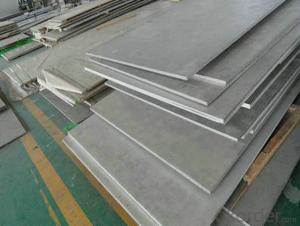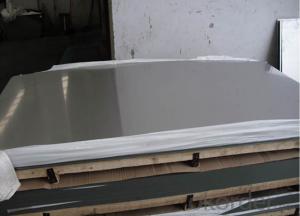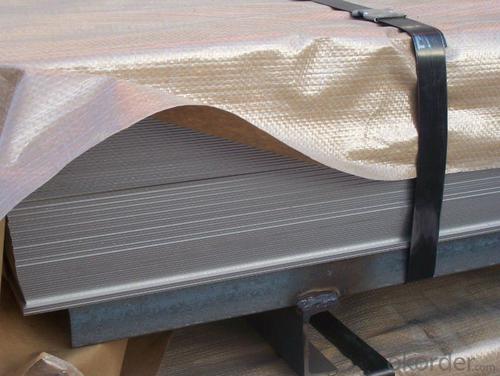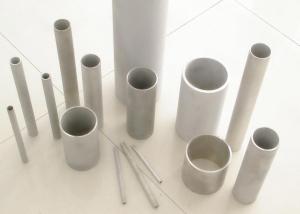Stainless steel plate/sheet 304/304L,201,202,310S,316L,316Ti,410,420,444
- Loading Port:
- Shanghai
- Payment Terms:
- TT OR LC
- Min Order Qty:
- 500 m.t
- Supply Capability:
- 5000000 m.t/month
OKorder Service Pledge
OKorder Financial Service
You Might Also Like
Stainless steel plate/sheet
304,201,202,310S,309S,316L,316Ti,321,304L,410,420,430,444,443,409L,904L
| Description | steel sheet,hot rolled steel sheet,cold rolled steel sheet, steel sheet,sheet,steel plate |
| Standard | ASME, ASTM, EN ,BS,GB,DIN, JIS etc |
| Application | Steel sheet applies to construction field, ships building industry, petroleum & chemical industries, war and electricity industries, food processing and medical industry, boiler heat exchanger, machinery and hardware fields. |
| Packaging | Standard export sea-worthy packing |
| Delivery time | 10-30 days |
| Note | Our company has cooperative relation between the domestic agents. Stainless steel sheet can be made accordingto the customers requirements. Fasten delivery. Quality assured. |
| Quality | No.1 |
| Productivity | 1200ton/day |
| Contacts | If you have any question,please feel free contact me. |
Stainless steel sheet surface finish characteristics
| Surface finish | Characteristics and application |
| 2B | The surface brightness and flatness of no2B is better than no2D. then through a special surface treatment to improve its mechanical properties,No2B could nearly satisfy comprehensive uses. |
| No.1 | Polished with abrasive belt of grit#100-#200, have better brightness with discontinuous coarse stria, used as inner and external ornaments for building, electrical appliances and kitchen utensils etc. |
| No.4 | Polished with abrasive belt of grit #150-#180,have better brightness with discontinuous coarse stria, but thinner than No3, are used as bathtub buildings inner and external ornaments electrical appliances kitchen utensils and food processing equipment etc. |
| HL | Polished with abrasive belt of grit #150-#320 on the NO.4 finish and has continuous streaks, mainly used as buildings ornaments elevators, door of building, frontal plate etc. |
| BA | Cold rolled, bright annealed and skin-passed, the product have excellent brightness and good reflexivity like mirror, kitchen apparatus, ornament etc. |
| 8K |
Product Shows :


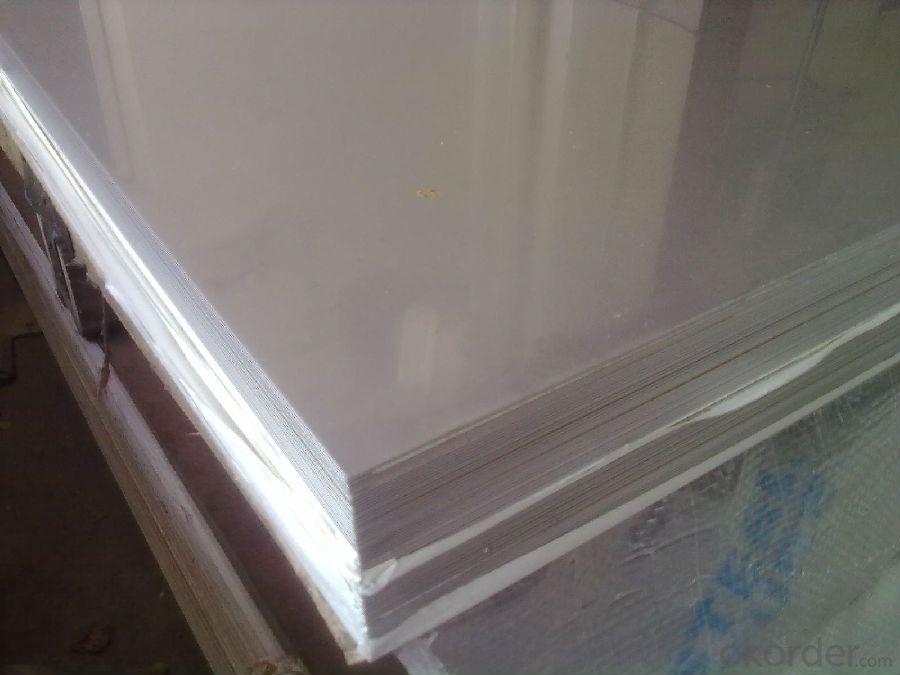

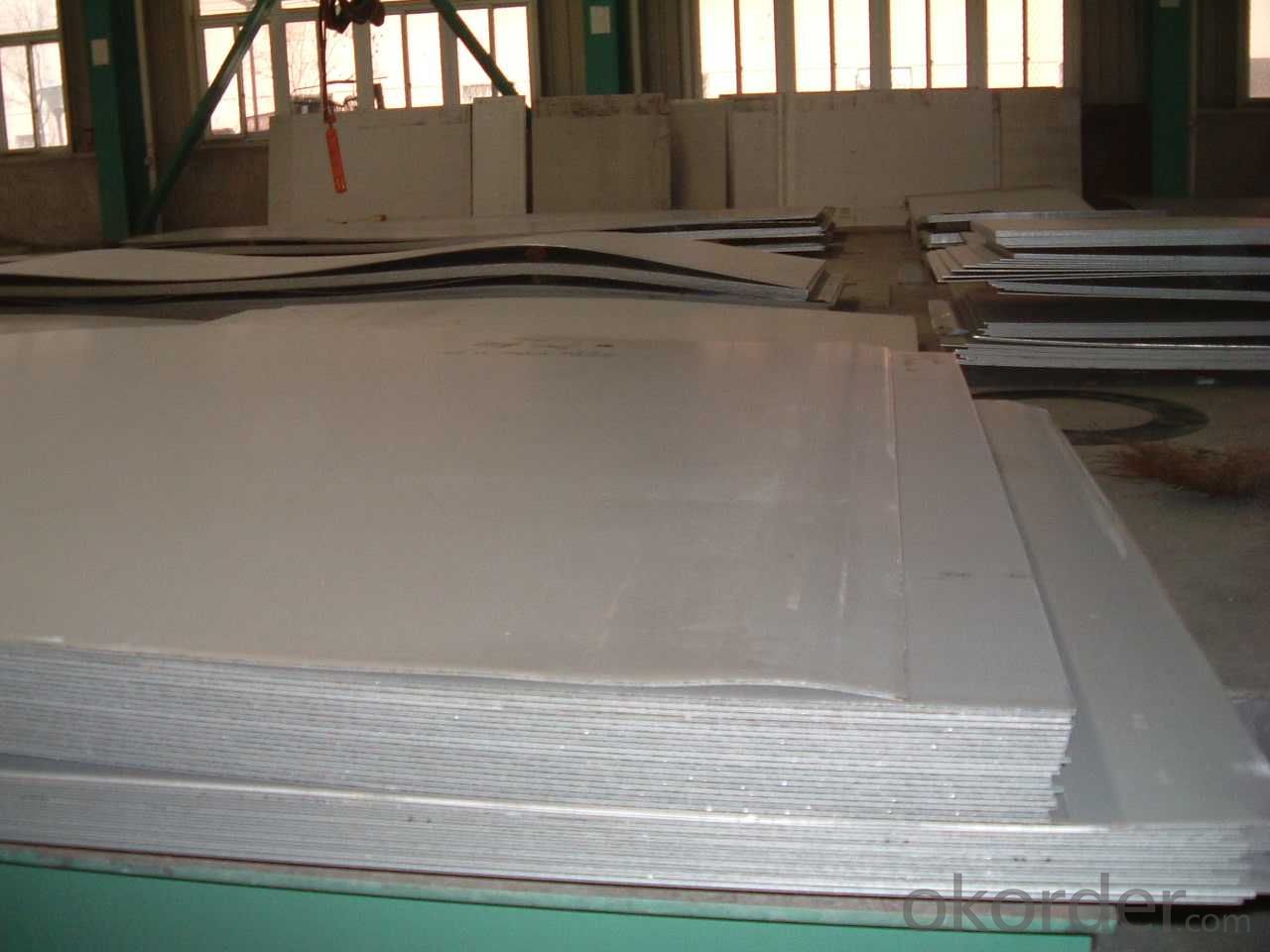
Application :
•Escalator, Elevator, Doors
•Furniture
•Production tools, Kitchen appliances, freezers, cold rooms
•Auto Parts
•Machinery and Packaging
•Equipment and Medical devices
•Transport system
Packaging and Loading


- Q: Can stainless steel sheets be painted or coated?
- Yes, stainless steel sheets can be painted or coated. However, it is important to properly prepare the surface by cleaning and applying a suitable primer before painting or coating to ensure adhesion and durability of the finish.
- Q: Can stainless steel sheets be used for brewery piping?
- Yes, stainless steel sheets can be used for brewery piping. Stainless steel is a popular material choice for brewery piping due to its corrosion resistance, durability, and hygienic properties. It can withstand the harsh chemicals and high temperatures involved in the brewing process, ensuring the integrity and cleanliness of the piping system. Additionally, stainless steel is easy to clean and maintain, making it ideal for use in breweries where cleanliness and sanitation are paramount. Overall, stainless steel sheets are a reliable and suitable option for brewery piping.
- Q: Can stainless steel sheets be used for elevator door frames?
- Yes, stainless steel sheets can be used for elevator door frames. Stainless steel is a popular material choice for elevator door frames due to its durability, corrosion resistance, and aesthetic appeal. It can withstand the constant wear and tear of opening and closing, as well as the various cleaning agents used in elevator maintenance. Stainless steel also provides a sleek and modern look that complements the overall design of the elevator. Additionally, stainless steel is easy to clean and maintain, making it a practical choice for elevator door frames.
- Q: What are the different types of stainless steel sheet patterns available?
- There are several different types of stainless steel sheet patterns available, each with its own unique design and characteristics. Some of the most common patterns include: 1. Plain or smooth: This is the most basic and common pattern, featuring a smooth and simple surface without any visible texture or design. 2. Brushed or satin: This pattern is achieved by brushing the surface of the stainless steel sheet with a fine grit abrasive, creating a consistent directional grain. It provides a subtle and elegant look. 3. Diamond or quilted: This pattern features a raised diamond-shaped design on the surface of the stainless steel sheet, providing enhanced traction and slip resistance. It is commonly used for flooring, stairs, and industrial applications. 4. Linen: This pattern resembles the texture of linen fabric, with a series of parallel lines etched onto the surface of the stainless steel sheet. It adds a unique visual appeal and can be used in various applications, including interior design and architectural projects. 5. Perforated: This pattern consists of a series of small holes or perforations punched into the stainless steel sheet, creating a visually interesting and functional design. It is commonly used in applications that require ventilation or filtration. 6. Checker or tread: This pattern features a raised checkerboard design on the surface of the stainless steel sheet, providing a non-slip surface. It is commonly used for flooring, stairs, and transportation equipment. These are just a few examples of the different types of stainless steel sheet patterns available. Each pattern offers a different aesthetic and functional value, allowing for versatile use in a wide range of applications.
- Q: Are stainless steel sheets resistant to caustic soda?
- Yes, stainless steel sheets are generally resistant to caustic soda. Caustic soda, also known as sodium hydroxide, is a highly corrosive substance, but stainless steel is known for its excellent corrosion resistance. Stainless steel contains chromium, which forms a protective oxide layer on the surface of the metal, preventing it from reacting with caustic soda. However, it is important to note that the exact resistance of stainless steel to caustic soda may vary depending on the grade or type of stainless steel. Therefore, it is always recommended to consult the specific material specifications or consult with a qualified professional to ensure the appropriate choice of stainless steel for specific applications involving caustic soda.
- Q: Are stainless steel sheets suitable for brewing equipment?
- Stainless steel sheets are indeed an excellent choice for brewing equipment. With its outstanding corrosion resistance, durability, and hygienic properties, stainless steel has become a popular material for such equipment. It is highly resistant to rust, stains, and chemical reactions, making it perfect for contact with liquids and food-grade applications. Moreover, stainless steel sheets offer a smooth and non-porous surface, preventing the growth of bacteria and enabling effortless cleaning and sanitation. In addition, stainless steel can withstand the high temperatures involved in brewing processes without warping or deforming, thanks to its remarkable heat resistance. In sum, stainless steel sheets are a dependable and enduring option for brewing equipment.
- Q: What are the different types of edge profiles for stainless steel sheets?
- Stainless steel sheets can be enhanced with various edge profiles to meet both aesthetic and functional needs. The following are a selection of these profiles: 1. The Square Edge: This is the simplest and most common profile, featuring a straight, unadorned edge. 2. The Beveled Edge: By angling and shaping the edge, a beveled profile adds a refined and polished look with a slight slope or chamfer. 3. The Rounded Edge: Also known as the bullnose edge, this profile smooths out sharp corners, reducing the risk of injury and creating a curved and sleek appearance. 4. The Full Radius Edge: This profile involves a complete semicircular or rounded edge, offering a more pronounced curved effect compared to the rounded edge. 5. The Ogee Edge: With a double curve of concave and convex shapes, the ogee edge adds an elegant and decorative touch, perfect for applications requiring a more ornamental appearance. 6. The Dupont Edge: This sleek and modern profile features a straight edge with small bevels on the top and bottom sides, often used in contemporary design applications. 7. The Knife Edge: By sharpening the edge to a thin, precise edge, the knife edge profile is ideal for applications requiring a clean-cut and precise appearance. These examples provide just a glimpse of the edge profiles available for stainless steel sheets. The choice of profile depends on the specific requirements, style preferences, and intended use of the project.
- Q: What is the water resistance of stainless steel sheets?
- The water resistance of stainless steel sheets is typically high due to their nonporous nature and corrosion-resistant properties.
- Q: Stainless steel plate surface treatment: ink, wire drawing, polishing what role?
- Oil mill, also known as "snow silk", "broken wire", is a kind of anti fingerprint drawing, used in the elevator car. It is to use the 4# wire drawing machine grinding, with grease to reduce the temperature generated by the board, so that the board surface to maintain smooth, non deformation
- Q: Can stainless steel sheets be used for decorative lighting fixtures?
- Yes, stainless steel sheets can be used for decorative lighting fixtures. Stainless steel is a versatile material that is known for its durability, corrosion resistance, and sleek appearance, making it suitable for creating stylish and long-lasting lighting fixtures. Additionally, stainless steel can be easily manipulated into various shapes and designs, allowing for creative and unique decorative lighting options.
Send your message to us
Stainless steel plate/sheet 304/304L,201,202,310S,316L,316Ti,410,420,444
- Loading Port:
- Shanghai
- Payment Terms:
- TT OR LC
- Min Order Qty:
- 500 m.t
- Supply Capability:
- 5000000 m.t/month
OKorder Service Pledge
OKorder Financial Service
Similar products
Hot products
Hot Searches
Related keywords


